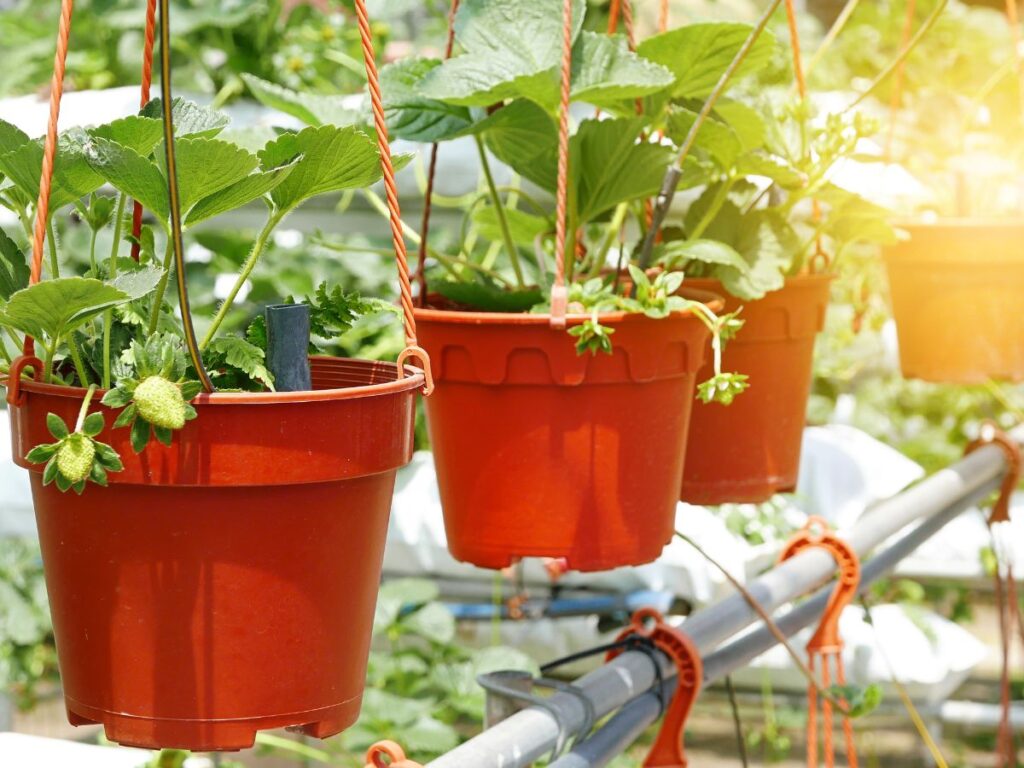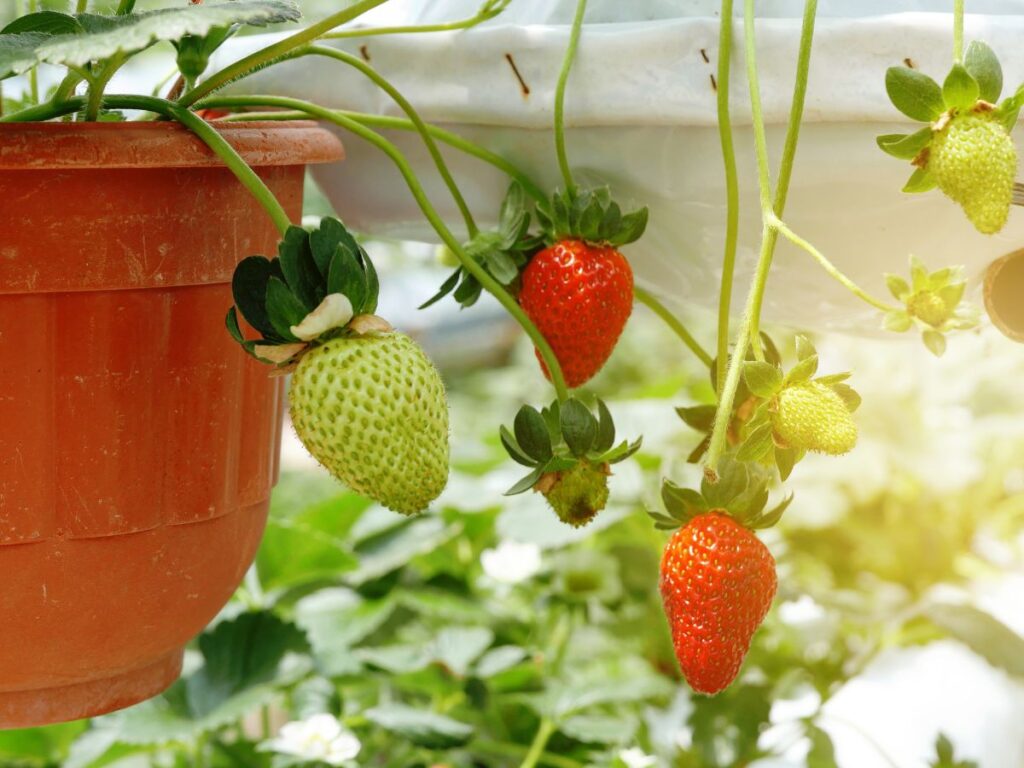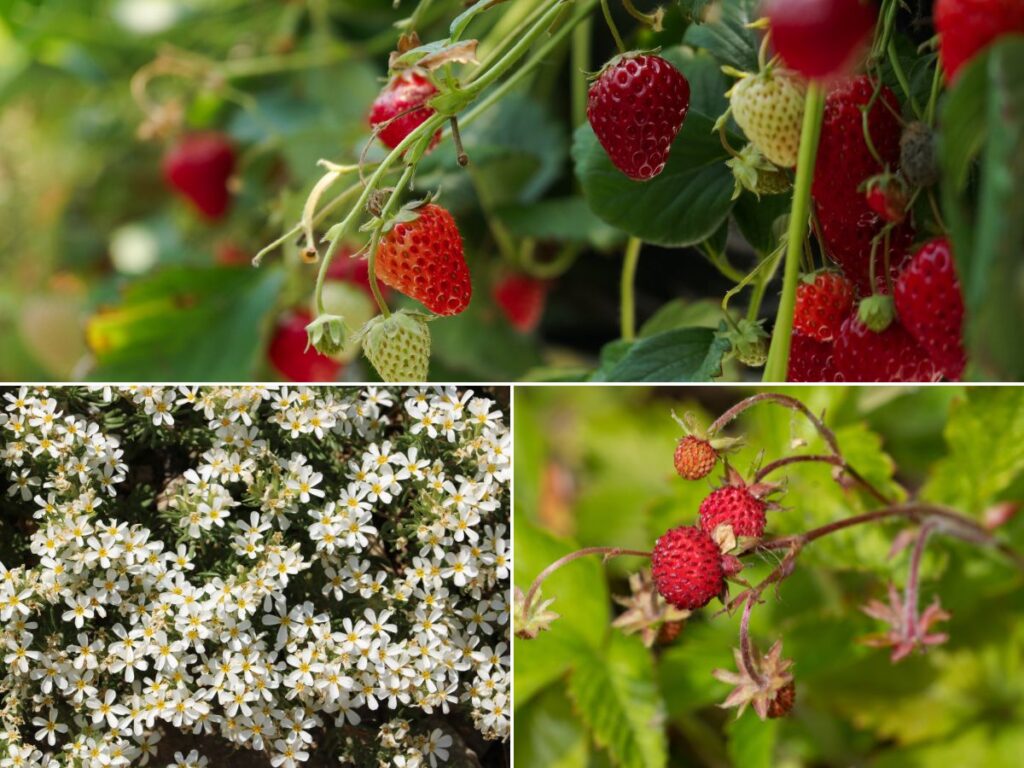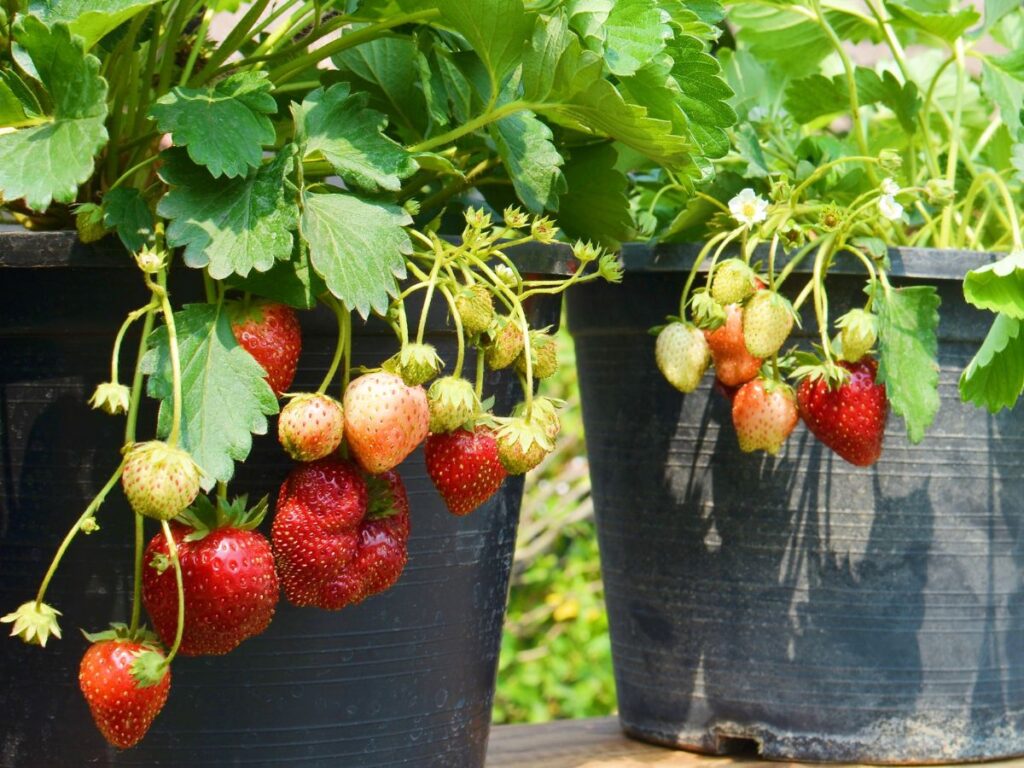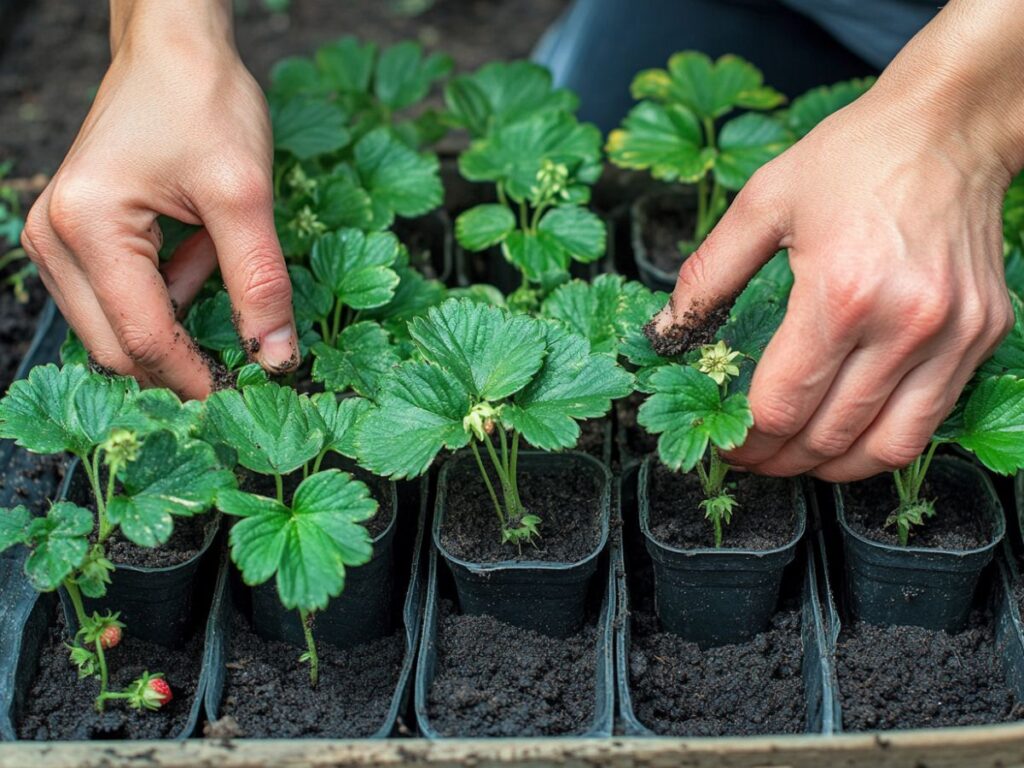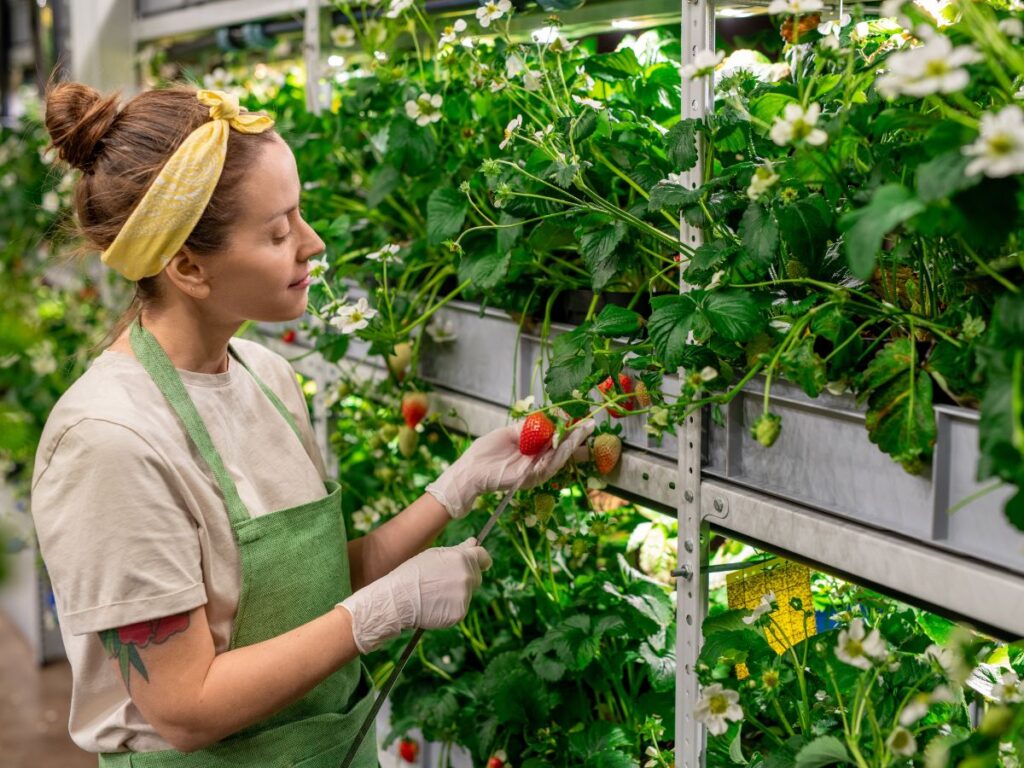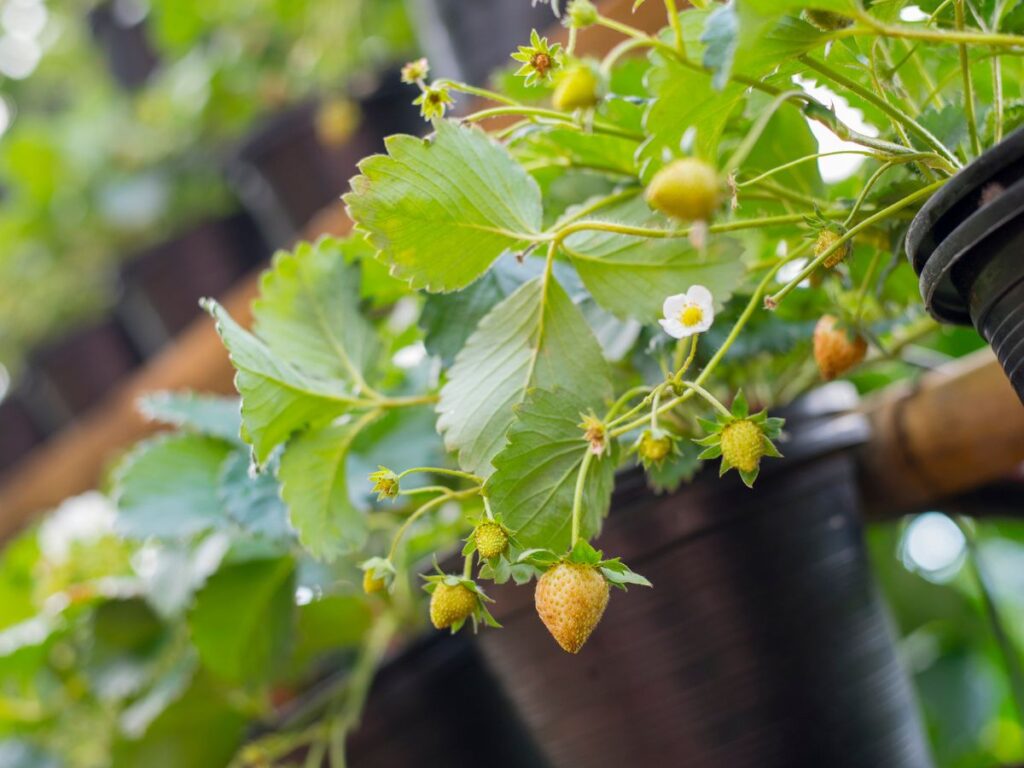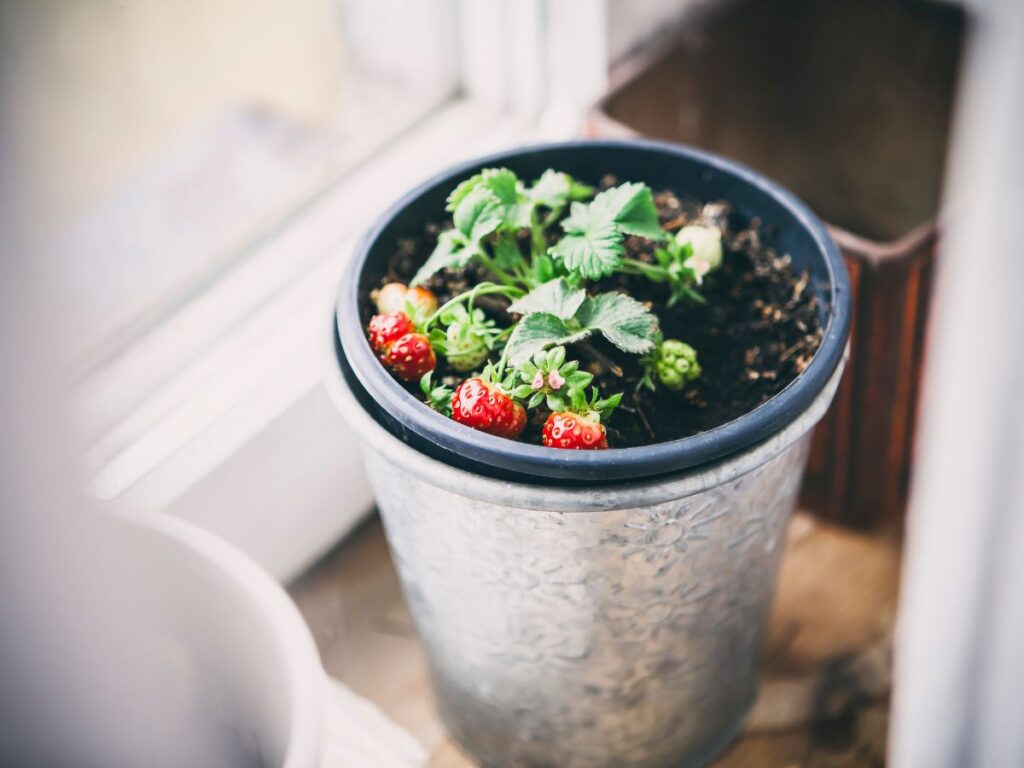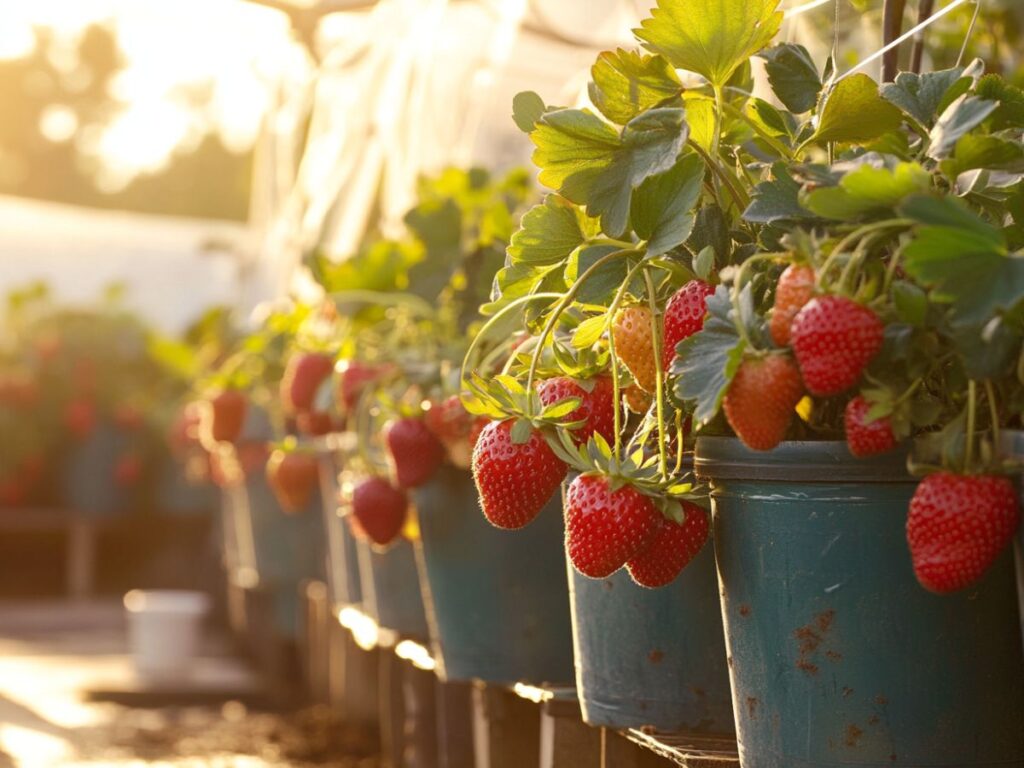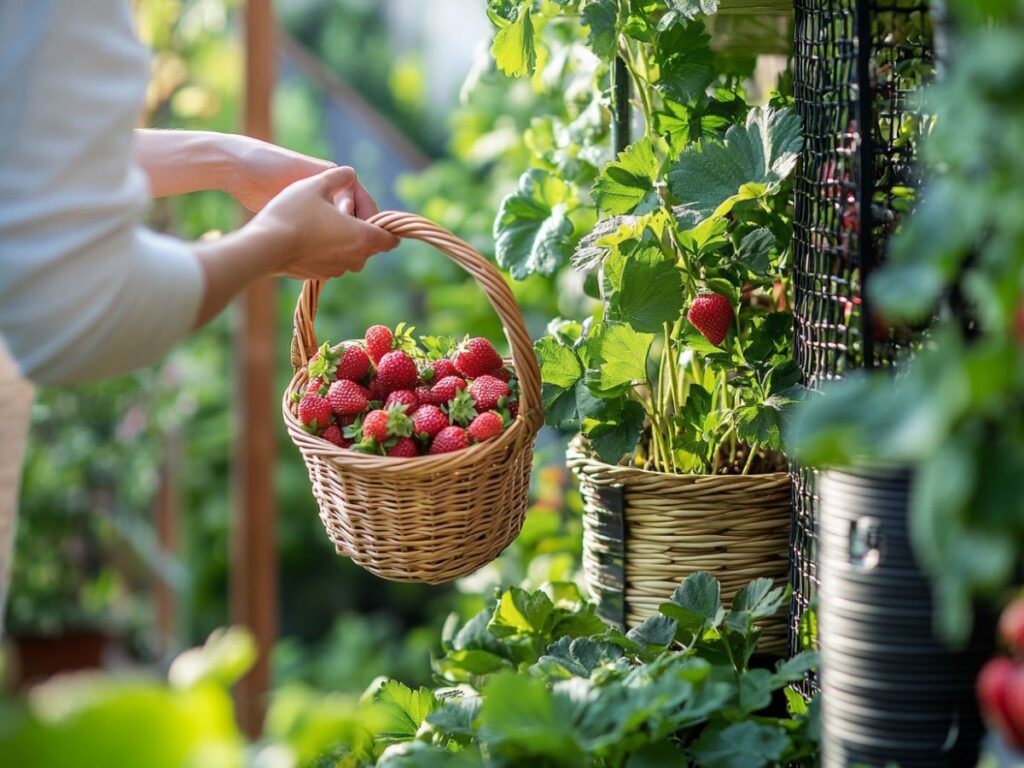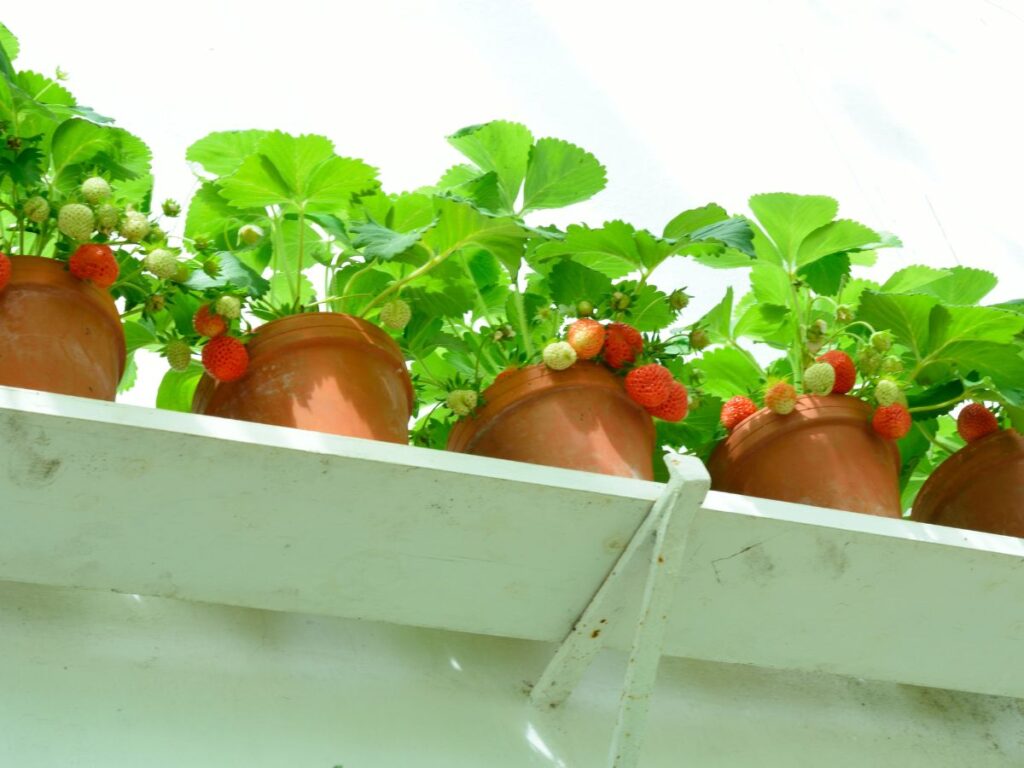Strawberries are the gateway fruit for many aspiring gardeners. They’re sweet, versatile, and full of nostalgia. But the common struggle of growing strawberries is often the space they need to spread out.
Fortunately, vertical gardening provides a clever solution that doesn’t compromise on yield.
If you don’t have much room but still want to harvest a good amount of strawberries, growing them in vertical containers might be your next great gardening project.
In this post, we’ll walk through everything you need to know about growing strawberries vertically—from choosing the right containers to maintaining healthy plants.
Why Vertical Gardening for Strawberries?
If you’ve ever been to a strawberry farm or tried growing them at home, you’ll know that strawberries like to sprawl.
Their runners (or stolons) grow horizontally, sending out baby plants, which means they can quickly take over garden beds. If you don’t have much ground space, this can get tricky.
Vertical gardening, on the other hand, maximizes your yield by going upward instead of outward. Plus, growing strawberries in vertical containers can reduce the risk of pests and soil-borne diseases because the fruits are elevated off the ground.
Think of it this way: you’re creating a small, strawberry-filled skyscraper in your backyard. It saves space and provides the plants with the drainage and aeration they need.
Choosing the Right Vertical Containers
Not all vertical containers are created equal, and strawberries have specific needs. When picking the right vertical system, there are a few factors to consider: container size, material, and structure.
Size
Strawberries don’t need huge containers, but they do need a good amount of soil depth for their roots. Aim for containers that are at least 8-12 inches deep. This ensures they have enough room to grow but won’t get waterlogged.
Material
You’ll find containers made of plastic, terracotta, fabric, or wood. Plastic and fabric containers are lightweight and easy to move around.
Fabric pots are great for aeration and drainage, while plastic is more durable and retains moisture longer. Terracotta and wood have aesthetic appeal but can be heavier and may require more frequent watering since they dry out faster.
Structure
Vertical planters come in various forms—stackable planters, wall-mounted systems, and tower gardens.
Stackable planters and towers are especially effective for strawberries because they provide ample room for the plants to spread their leaves and develop fruit.
Wall-mounted systems can work too, but you might need to water them more frequently since they’re more exposed to air.
Popular systems like stackable plastic planters or pallet gardens can work well. Just ensure the structure allows good drainage, as strawberries hate soggy roots.
The container should also be stable enough to handle the weight of the plants and soil without toppling over.
Picking the Right Strawberry Variety
Not all strawberry varieties are suited for vertical growing. Since vertical containers don’t have as much space as a traditional garden bed, you’ll want to choose compact or everbearing varieties.
Everbearing Strawberries
These varieties produce fruit in small bursts throughout the growing season.
They don’t send out as many runners, which makes them ideal for limited spaces. Some popular everbearing varieties include Ozark Beauty, Quinault, and Evie 2.
Day-Neutral Strawberries
Like everbearing varieties, day-neutral strawberries also produce continuously throughout the season, but they are more sensitive to temperature.
They do well in climates where summers aren’t too hot. Albion and Seascape are good examples.
Alpine Strawberries
If you want something a bit different, alpine strawberries are smaller and less prone to spreading via runners. They grow well in containers and produce small but highly flavorful fruit.
Planting Strawberries in Vertical Containers
Once you’ve chosen your containers and varieties, it’s time to plant. Here’s a simple guide to getting your strawberries started in vertical containers:
Prepare the Container
Ensure your containers have adequate drainage holes at the bottom or sides. Place a layer of gravel or small stones at the bottom to further improve drainage.
If using a stackable planter, make sure to align the holes in a way that encourages good water flow between tiers.
Use High-Quality Soil
Strawberries thrive in nutrient-rich, well-draining soil. Use a high-quality potting mix designed for fruit or vegetable plants.
You can also add compost or slow-release organic fertilizer to give your strawberries a head start. Avoid garden soil as it can become compacted in containers and limit root growth.
Planting
When planting strawberries, space them about 10-12 inches apart. Since vertical containers have limited space, you might plant one strawberry plant per pocket or small section of the container.
Gently spread out the roots and plant them deep enough so that the crown (the part where the leaves meet the roots) sits at soil level.
Water Thoroughly
After planting, give your strawberries a good drink of water. The soil should be moist but not waterlogged.
Because vertical containers are more exposed to the elements, they can dry out faster, so you’ll need to monitor the moisture level closely, especially in hot weather.
How to Care for Strawberries in Vertical Containers
Strawberries aren’t difficult to grow, but they do have specific needs to thrive in vertical containers. The key is consistent care and attention.
1. Watering
One of the most important aspects of container gardening is maintaining proper moisture. Vertical containers dry out faster than traditional beds, especially those made from fabric or terracotta.
Check the soil regularly and water whenever the top inch feels dry. It’s a balancing act—too much water, and you risk root rot; too little, and your strawberries won’t produce well.
2. Fertilizing
Container-grown strawberries need a steady supply of nutrients to produce fruit. Use a balanced, organic fertilizer every four to six weeks during the growing season.
You can also use liquid seaweed or fish emulsion for a nutrient boost.
3. Mulching
To help conserve moisture and keep the soil temperature stable, consider adding a layer of organic mulch, like straw, around the base of the plants.
Mulching also helps prevent weeds and keeps the strawberries clean as they develop.
4. Pruning Runners
If you’re growing everbearing varieties, you’ll need to manage their runners. While it’s tempting to let strawberries propagate themselves, runners can take up valuable space and resources.
Trim them back to encourage the plant to focus on fruit production rather than spreading.
5. Pest and Disease Management
Vertical containers help reduce the risk of pests, but they’re not immune to common strawberry issues. Keep an eye out for slugs, snails, and aphids.
If you spot pests, use organic insecticidal soap or neem oil. Additionally, strawberries are prone to fungal diseases like powdery mildew and gray mold, especially in humid conditions.
Ensure good air circulation around your plants, and remove any dead or diseased leaves to prevent the spread of pathogens.
Extending the Growing Season
One of the great advantages of growing strawberries in vertical containers is the ability to extend the growing season.
You can start your strawberries earlier in the spring by moving the containers to a sunny, sheltered spot. Similarly, you can prolong the harvest in the fall by bringing the containers inside or covering them with frost cloths on chilly nights.
If you’re growing in a mild climate, some everbearing and day-neutral varieties might even produce fruit year-round. Just keep in mind that strawberries slow down in colder temperatures and may require more protection from frost or freezes.
Harvesting and Replanting
After all the hard work of growing strawberries in vertical containers, comes the best part: harvesting.
Strawberries are ready to pick when they’re fully red, plump, and slightly soft to the touch. Try to pick them in the morning, when they’re at their sweetest.
Harvest regularly to encourage more fruit production. For everbearing varieties, this could mean multiple harvests throughout the season.
After the first year, you’ll likely need to replace or refresh some of your plants, as strawberries tend to produce their best fruit during their first two to three years of life.
Growing strawberries in vertical containers is a space-efficient, creative solution that allows even the smallest spaces to flourish.
The key to success lies in choosing the right container, the right variety, and maintaining consistent care. With vertical gardening, you can enjoy the sweet, juicy rewards of homegrown strawberries, no matter how limited your space may be.
So, why not give it a try? With a little bit of effort, you could be enjoying fresh strawberries all season long, right from your own vertical garden.


